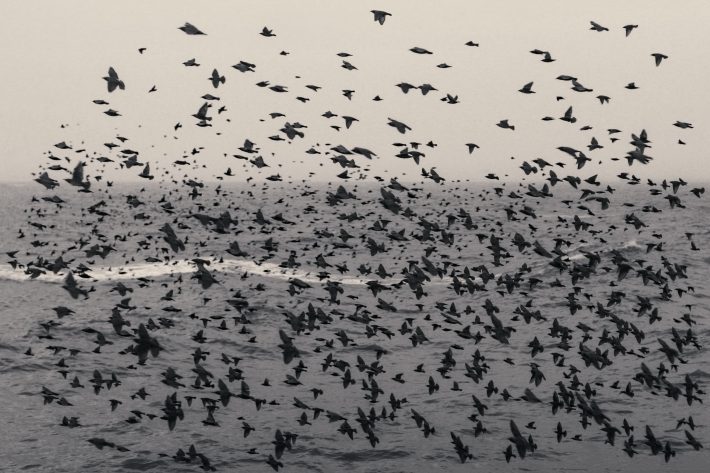Scientists take to Twitter to study flying ants, starling murmurations and house spiders
Searching tweets for text or hashtags allowed researchers to gather information on popular ecological phenomena observed in the UK such as the emergence of flying ants and starling murmurations. Their findings are published today in the journal Methods in Ecology and Evolution.

To test how reliable and accurate Twitter is as a data source for scientific research, ecologists from the University of Gloucestershire compared their results directly to three previously published studies on winged ant emergence, autumnal house spider sightings, and starling murmurations. These studies were based on primary data collected by citizen scientists during the same period.
They found that the “Twitter-mined” data was able to replicate most temporal findings, such as date and time of ant mating flights or house spider sightings. The researchers could also reproduce the sex ratio of house spiders by analysing the photos tweeters uploaded and, in some cases, received an indication of where in the house the spider was seen.
Professor Adam Hart from the University of Gloucestershire, who led the study, said: “The retrospective analysis of social media has been used widely to detect earthquakes or political sentiment, but not so much in ecological research. Our study shows that passive citizen science, where we gain information and access to photos indirectly through Twitter or other social media channels such as Facebook and Flickr, can indeed generate robust and interesting data.”
All tweets have an automatic date and time stamp and people generally post on the same day of the actual sighting.
“It is perhaps the immediacy of Twitter, the “urgency” of the phenomena and the desire to connect with other users that have produced so many usable tweets. The emergence of winged ants is also popular in the media and hashtags like #flyingantday often trend on Twitter”, Hart added.
Determining the exact location of a sighting proved more difficult as people rarely indicate it in their posts and it is not necessarily the same as the home location listed in their Twitter bio. Twitter has recently launched the option of having latitude and longitude automatically added to tweets via “share precise location”, which could fill some of these gaps in the future.
As for the observed starling murmurations, 9 of 10 tweets mentioned the geographical location, identifying places such as Blackpool, Aberystwyth, Brighton, the Somerset Levels and East Anglia. These aerial displays often become a hotspot for people wanting to watch them, and thus location is relevant to both tweeter and followers.
Hart concludes: “Twitter can provide a valuable tool for phenological studies of charismatic events and species. Dog owners noting ticks on their animals, or the timing of frog spawning or foxes mating are just some of the questions that could be explored.”
To encourage members of the public to participate in ecological studies, the researchers suggest promoting specific hashtags that make the search through Twitter archives easier. There could also be a system that allows people to automatically record data by tweeting about it. They stress that Twitter-derived data needs to be interpreted with care though as it can be difficult to validate. Thus, it should be compared directly with data gathered through other more robust methods.
Read the full article (freely available for a limited time):
Hart AG, Carpenter WS, Hlustik-Smith E, Reed M, Goodenough AE. Testing the potential of Twitter mining methods for data acquisition: Evaluating novel opportunities for ecological research in multiple taxa. Methods Ecol Evol. 2018;00:1–12. DOI: 10.1111/2041-210X.13063
Media contact:
Sabrina Weiss, British Ecological Society press office, Tel: +44 207 685 2523, Email: press@britishecologicalsociety.org
Like what we stand for?
Support our mission and help develop the next generation of ecologists by donating to the British Ecological Society.